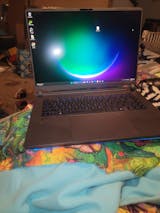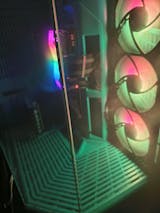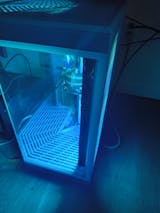5G and fiber-optic broadband are two of the frontrunners in the battle for next-generation internet access as the globe moves towards quicker, more efficient ways of communication. Lots of people want to know, "Which one is better?" Let's get into the nitty-gritty of both technologies so you can make an informed decision about which one is best for you.
1. Speed and Capacity:
- 5G Home Internet: Fifth-generation (5G) mobile network technology has the potential to match or perhaps outperform the speeds of current wired internet connections. 5G can reach speeds of 1-10 Gbps under ideal conditions.
- Fiber-Optic Broadband: Some fiber carriers even provide home connections at rates of up to 10 Gbps, which is far faster than the typical 1 Gbps.
Verdict: Both 5G and fiber provide extremely high speeds. While 5G has the potential for extremely fast speeds, it may not always deliver in practice due to a number of problems.
2. Reliability and Consistency:
- 5G Home Internet: Distance from the cell tower, physical barriers (such as buildings), and network congestion can all affect how well 5G performs.
- Fiber-Optic Broadband: Since it is a hardwired link, fiber optics seldom experience interruptions or slowdowns, so long as the cables themselves remain undamaged.
Verdict: When it comes to dependability and stability, fiber is superior.
3. Latency:
- 5G Home Internet: 5G's incredibly low latency is especially useful for time-sensitive tasks like online gaming and instant messaging.
- Fiber-Optic Broadband: Fiber's reduced latency makes it a good choice for many online pursuits.
Verdict: We have a deadlock here. 5G and fiber both have minimal latency, making them both great for time-sensitive operations.
4. Installation and Mobility:
- 5G Home Internet: 5G's wireless nature is one of its most appealing features. Connecting a 5G modem or router is usually all that's required to get started. Additionally, there is a greater opportunity for movement.
- Fiber-Optic Broadband: Cables must be physically laid in order for the system to be installed, which may be a time-consuming and costly process. However, the link is rock-solid when it has been set up. Unlike copper, fiber doesn't allow for mobility.
Verdict: The deployment and portability of 5G networks are superior.
5. Coverage and Accessibility:
- 5G Home Internet: The availability of 5G is growing quickly, but it is not yet as widespread as 3G and 4G services. It may take more time for complete coverage to reach rural or less inhabited regions.
- Fiber-Optic Broadband: The deployment of fiber networks is heavily reliant on capital expenditures. Fiber may not be readily available in all places, especially more remote ones.
Verdict: This is very conditional on local conditions and infrastructure spending. The availability of high-speed fiber optic Internet in certain locations may rival that of 5G in others.
The question of whether or not 5G home internet is superior to fiber is not easily answered. Availability and suitability to specific needs vary greatly from place to place. 5G might be the way to go if you value portability, simplicity of setup, and the possibility of increased data transfer rates. However, fiber-optic broadband is unrivaled in terms of dependability, stability, and a tried-and-tested medium.
Follow the localization and development of both technologies to make an informed decision that suits your requirements and habits.














